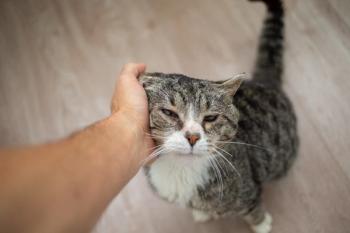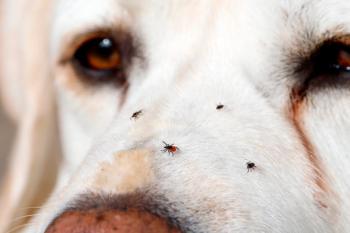
Let it rain
National Report - Mark Twain once said it was best to read the weather forecase before praying for rain.
NATIONAL REPORT — Mark Twain once said it was best to read the weather forecast before praying for rain. Unfortunately for those in Texas, Oklahoma and New Mexico, the forecast has been steadily dry for far too long. Those states, along with Louisiana, are experiencing an extended drought that has been likened to the Dust Bowl—or worse.
Crops are dying, and ranchers face diminished water supplies for their animals. Grazing land has all but disappeared, and without rain, winter hay will be limited or non-existent. As a result, cattle producers are culling their herds and selling off animals that otherwise would have been creating future production, including heifers and cows between the ages of 3 and 6.
Texas is in its driest 12-month period in the state's history, and July was the hottest month there since 1895. To make matters worse, says Travis Hall, professor at Texas A&M University, who also is the associate head for soil and crop sciences, climatic models show a La Nina pattern, which pushes up the jet stream, giving states in the drought zone less precipitation and those north more than normal.
"I'm fully expecting a full two-year drought here," he says. "I can't predict the severity, but all of the major drought events are triggered by La Nina."
That means it could get a lot drier before it gets wetter—and better. As it stands, livestock auctions are crowded. Some sales in Texas reported they couldn't handle the volume because of the rapid movement of animals off of ranches. Although Hall notes ranchers "held off as long as they could," for most, waiting was no longer an option.
Back in 2009, Texas was experiencing a dry spell, forcing ranchers to empty hay barns. While a decent amount of hay was made in 2010, most ranchers have been feeding cattle hay since October, rapidly depleting supplies.
The story is similar just north in Oklahoma where livestock auctions have two to three times the normal volume. A lack of moisture over the winter has equaled a net loss of moisture in ponds and groundwater, and many areas are experiencing a stretch of more than 30 consecutive days of 100-degree weather, says state veterinarian Rod Hall. "We're running out of water, have no grass, no grass early, and people didn't make any hay," he says. "I've been in livestock in Oklahoma since 1965, and I've never seen it anywhere near this bad before."
In New Mexico, this time of year is typically referred to as the monsoon season. But in 2011, there's no water to be had. "We should be getting summer rains, but they have not been significant enough," says New Mexico State Veterinarian David Fly.
Adding fuel to the fire in New Mexico were, literally, fires. Severe blazes throughout the state were prompted by extended dryness. State officials mobilized to move cattle, horses, sheep and other animals out of the fires' paths. In fact, the Los Alamos fire is still burning, at least partially, Fly says, and has contributed to "significant livestock losses," but officials are still working to tally the numbers.
In the drought-afflicted states, many cattle are being sold to slaughter, though others are being purchased by producers in northern states, including the Dakotas, Colorado, Montana and others. Those states have had plenty of moisture—prompting flooding in some areas—creating grass for grazing and keeping ponds full of water. Whatever the animals' fate, one thing's for certain, Fly says. "Cattle are moving out of here."
But with the loss of breeding stock in drought-stricken states, the prospect for next year's calf crop is bleak. "It's a pretty severe loss for the cattle industry," acknowledges Fly.
The Department of Agriculture in late July released its mid-year cattle report, which showed a declining U.S cattle and calf inventory. The 1.1 percent drop was greater than expected due to accelerated sales, but those numbers don't take into account the even greater liquidation that occurred in the last days of July and then into August.
What's more, ranchers are holding fewer heifers for herd replacement. As of July 1, the number of heifers held dropped 4.5 percent, or 200,000 head, over the year earlier.
As cattle move to slaughter or are sold live to producers in other states, Oklahoma's Hall believes his state may require three to four years to return its cattle herd to normalized levels. Although, he cautions, that estimate assumes "normal years starting this fall and winter."
Cattle being sold are also not always in peak physical form. Feeding hay, when it is available, isn't as productive as normal forage, so body weights are down. Ensuring animals are healthy for movement and prepping them for crossing state lines has kept veterinarians in the drought zone busy. "There's a big flurry of work right now," says New Mexico's Fly. "But in the long run, we're going to have a lesser amount of work."
The situation is similar in Oklahoma, where Hall has worked to encourage the state's food-animal practitioners. "I know how hard it is when it's hot and dry, and I know how that wears on you," he says. "I can only imagine how tough it is for our veterinarians to go out there every day, physically and mentally."
The mental aspect may be particularly trying. As more ranchers liquidate their herds, it is generally acknowledged that many, particularly those who are older, won't re-enter the market when conditions improve. "It hurts our rural economy, and we'll lose some institutional knowledge from people who have spent a lifetime getting that experience," says Hall. "It's very bad in that respect."
For veterinarians, the concern is that clients will dry up just like the pasture lands. "A lot of veterinarians in the west and northwestern part of (Oklahoma) stay busy in the fall processing wheat-pasture cattle, and if we don't get rain soon, there won't be any (work)," says Hall. "It's just a bad situation all around." He, along with his contemporaries, are hoping and praying for rain, but if climatic models prove accurate, the drought could continue for months.
And in that case, the future remains unclear. "It's cattle. It's crops. It's water supply," says Texas A&M's Hall. "It's the perfect storm as far as droughts are concerned. If you don't have water, you can't do much."
Newsletter
From exam room tips to practice management insights, get trusted veterinary news delivered straight to your inbox—subscribe to dvm360.






